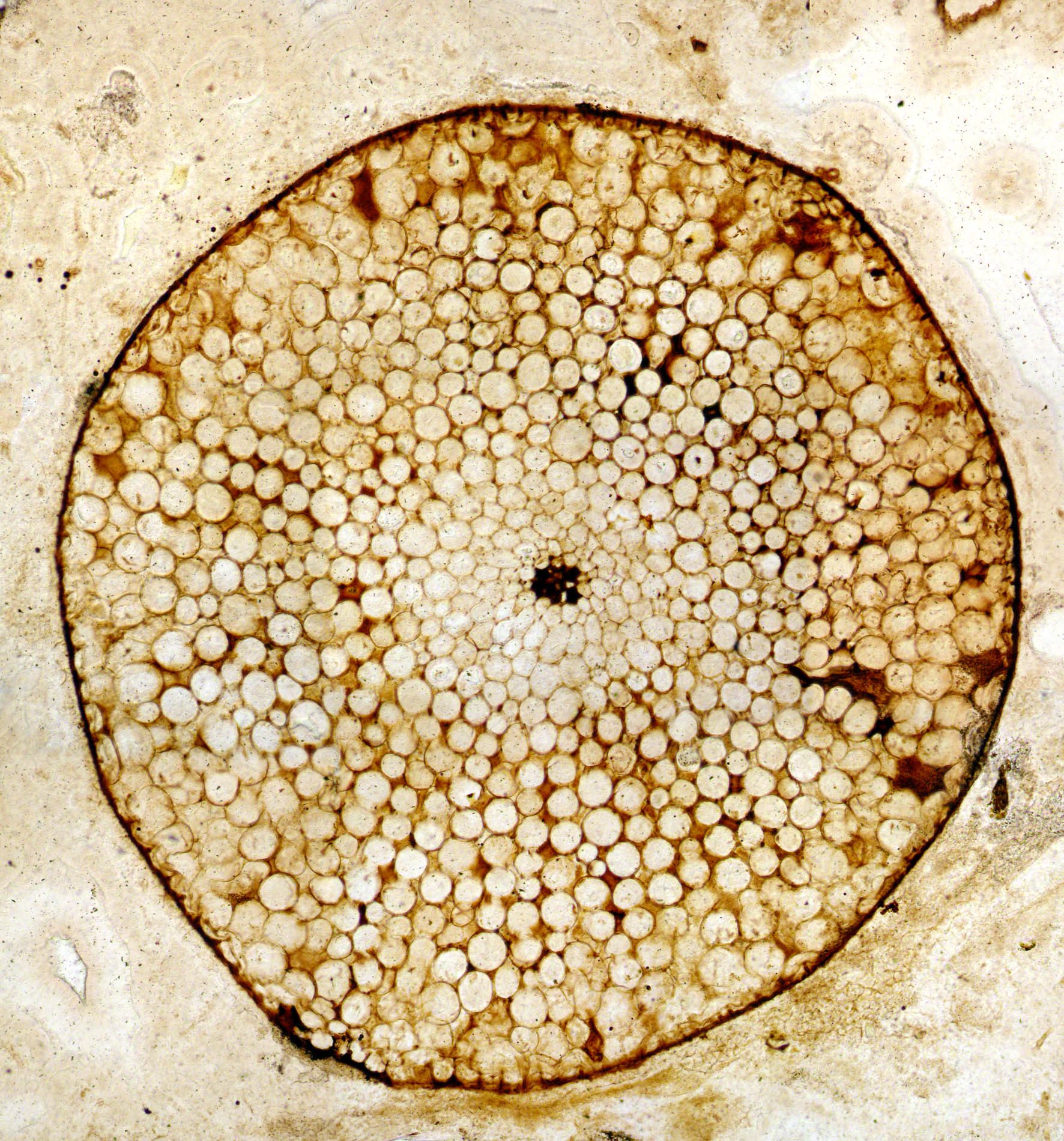But these same elements can be brought to the Earth’s surface by natural processes such as the bubbling up of hot springs. So it is valuable to understand how they were dealt with by the environment before humans came along. A site in Aberdeenshire in Scotland which is famous for early fossil life preserved by hot springs, shows us how it could have happened.
Some of the world’s most well preserved fossilised plants are found in Rhynie, just west of Aberdeen, in deposits thought to have come from the world’s oldest land ecosystem.
Exquisitely detailed plants – as well as spiders, insects, fungi and other life – were preserved there by hot springs about 410 million years ago. These are some of the earliest fossilised plants known, so are important in what they can tell us about plant evolution.
But those hot springs also introduced elements that would have been toxic to most forms of life. Our latest research shows how minerals deposited among the plants extracted the toxic metals from the spring water and limited their impact on the environment.
Minerals and toxic metals
The plants at Rhynie were encased in the mineral silica, which deposits around hot springs. At tourist spots like Iceland, New Zealand and Yellowstone National Park in the US, bacteria in the water are involved in producing these silica deposits, and this would have been the same at Rhynie.
As well as silica, the fossils contain certain minerals including pyrite (iron sulphide, so-called fool’s gold), manganese oxides and titanium oxides. It’s these minerals, produced by the bacteria and other lifeforms, that would have soaked up the toxic metals.
Pyrite, formed by the bacteria, soaked up arsenic from the spring water. Manganese oxides, commonly deposited by fungi, also absorbed arsenic. Titanium oxides, formed particularly around decomposing plant remains, absorbed tungsten and antimony.
So between them, the minerals formed by biological activity accounted for the main sources of toxicity. The evidence from Rhynie shows how natural processes have helped clean the environment since life first colonised the land.
The magic of mushrooms
Our solutions to man-made environmental problems, such as contamination from industry and mining, typically include a range of chemical treatments. But an exciting “natural” approach is the technique of mycoremediation, where fungi concentrate and store contaminating elements in their substance.
Fungi can be very resilient, and adapt rapidly to substances we regard as toxic. One strategy is to harvest fungi that live on mining or industrial waste and which are predisposed to cope with it, then use the fungi to clean up waste on other problem sites. In this way, fungi can be used to recover land contaminated by harmful metals.
Biologist Merlin Sheldrake, in his award-winning 2020 book Entangled Life, argues: “Fungi are some of the best-qualified organisms for environmental remediation … fine-tuned over a billion years of evolution.”
Evolution is a key word here. The ecosystem (plants, animals and their habitat, including minerals) does not “intend” to clean up toxic chemicals as humans do. However, life is more likely to thrive and reproduce in ecosystems that strip out harmful substances. Just as particular fungi can be selected to help deal with contaminated land, evolution favoured the species that adapted to environmental changes in the geological past, as implied at Rhynie.
Remaining questions
The deposits at this special geological site were formed by hot springs, whose waters preserved the plant cells. But because the hot springs that formed the Rhynie deposit were rich in arsenic, antimony and other trace elements, there is uncertainty about how representative these fossils may be of early plant communities.
Scientists might argue that the plants found at Rhynie could be an adaptation to an environment that was chemically unusual. There is no clear answer to whether this was so, but our observations do suggest that the ecosystem was able to respond to the water chemistry, so the existence of these plants was not necessarily abnormal.
Visitors to hot springs in New Zealand and Yellowstone today can see orange and yellow crusts containing the harmful arsenic, antimony and so on, but also precious metals like gold and silver, so the springs attract commercial interest.
Hot springs worldwide also contain an element that was pretty much ignored until recently: lithium. The spring waters provide a renewable supply of this element which is currently fundamental to rechargeable batteries – especially in electric vehicles, which are essential in the quest to achieve carbon emission targets. So hot springs may have more than one role in helping clean up the environment.
John Parnell, Professor of Geology and Petroleum Geology, University of Aberdeen
This article is republished from The Conversation under a Creative Commons license. Read the original article.
Source Link: The World’s First Environmental Clean-Up Happened 400 Million Years Ago
